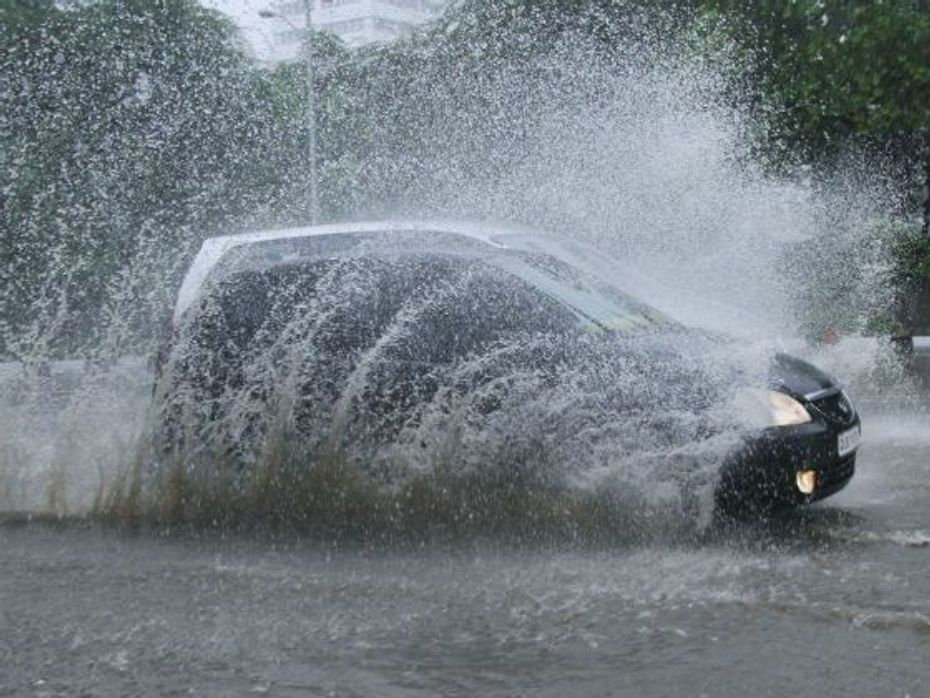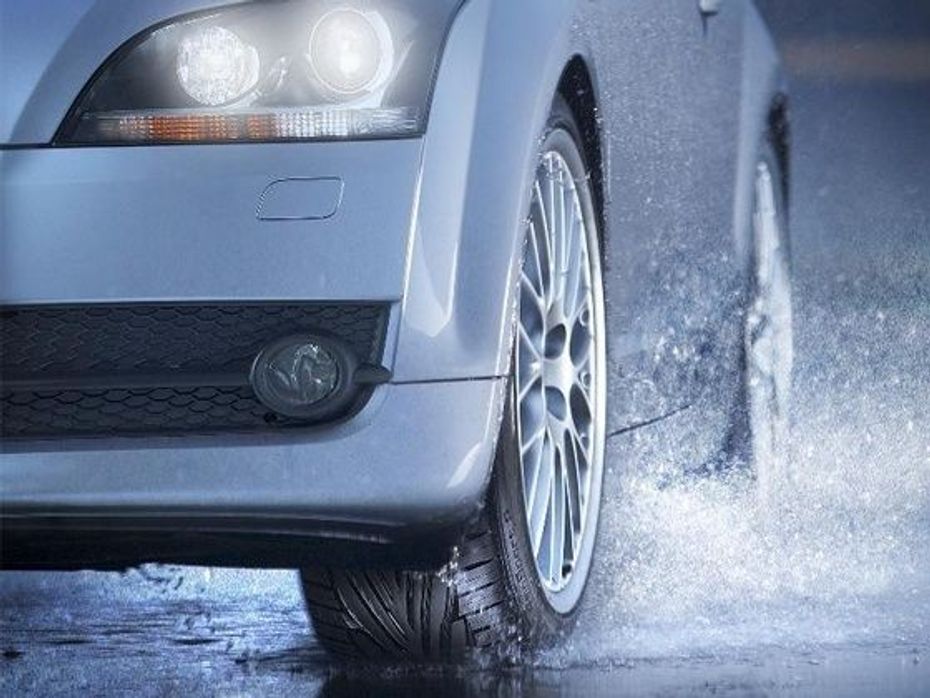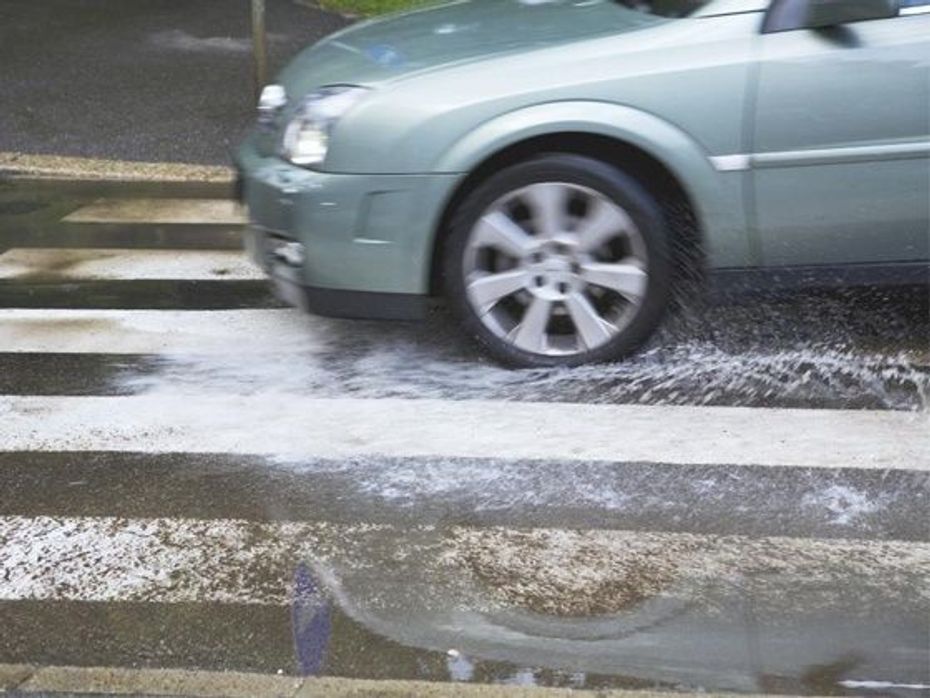Explore all New Cars of 2024
 Upcoming 2024 Maruti Suzuki Dzire To Get These 5 Features Over The Current ModelUpcoming 2024 Maruti Suzuki Dzire To Get These 5 Features Over The Current Model
Upcoming 2024 Maruti Suzuki Dzire To Get These 5 Features Over The Current ModelUpcoming 2024 Maruti Suzuki Dzire To Get These 5 Features Over The Current Model


The monsoon season is upon us here in India. The rain gods, along with a much needed relief from a usually unbearable Indian summer also gets along its set of yearly problems. Most roads in India, old and new will suffer from degradation and potholes. In certain cases, roads completely get washed away and are almost non-existent. A bad road surface cases your car’s tyre to work in overtime to cope up with the added stresses of driving over an undulated road and can have severe effects over its life. Here are some tips than can ensure a safe drive during the monsoons.
Check your tyres before the rains:
Prevention is better than cure and the same applies to your car. Checking your car’s tyres thoroughly before the monsoons can prevent situations like skidding or worse. Worn tyres have to be replaced before monsoons set in. If you think all your tyres have reached a point where they need to be changed, best do it before the rains set it. An easy way to know if you need to change your tyres is by physically checking how much tread is left on the tyres. Modern car tyres come with tyre wear indicators, which can give an educated user an immediate indication. One can also apply the more novices ‘One Rupee Test’ which help you know if your tyre needs replacing. Here is a step-by-step guide of the same:
Step 1: Take a one-rupee coin and put it in each groove of the tread. This will give you a quick estimate of the tread depth by judging how deep the coin goes.
Step 2: Repeat this process for all tyres and see how deep the coin goes in every tyre.
If your tread depth is the same in each groove of the tyre and between all tyres, there is nothing to worry about. However, in case there is considerable difference in the tread depth, then it’s a sign that your car is eating away rubber in that tyre. Also thoroughly check you car’s outer and inner sidewalls. A bubble on the sidewall or a cut can usually cause havoc in the rains. Potholes and their razor shard edges can cause a worn out or slightly damaged tyre to instantly degrade and be destroyed.

Installing new tyres:
Some people prefer to change only two tyres instead of the whole set. Usually, one would assume that as the front tyres get work out quicker, they would be better off with a new set up front. This is incorrect. A worn set of tyres at the back and a fresh set of tyres in the front can cause the back to slide under heavy high speed cornering and under heavy braking. Due to water and other debris on the road in the rains, this problem is usually compounded many times over. It is essential to install the new tyres in the rear and to swap the rear tyres to the front of the car. Just in case there is a loss of grip with the front tyres, it could result in under steer, a phenomenon which is way more controllable than over steer.
Ensure correct tyre pressures:
Many people like to slightly lower their tyre pressures in the rain so as to increase the contact patch between their cars and the road under low traction circumstances. Although to the common layman this would make perfect sense, it is an incorrect practice. Not only does this increase the chances of getting a puncture exponentially, it also puts unnecessary stresses on the tyre sidewall. Lower pressures also increase the friction in your tyres leading to the tyres producing more heat than they ought to. This extra heat is not a problem when the car is driven through rains or wet roads, but can severely affect the tyres in dry weather conditions.
Similarly, increasing the air pressure in your tyres will result in a reduced contact patch between the tyres and the road, which can lead to loss of grip. The smaller contact patch will also greatly reduce your car’s stopping distance in the wet under emergency braking situations.

Keep your tyres clean:
Yes, we know that tyres will get muddy and dirty in the rain, but a little special care and attention can actually go a long way. The best way to keep your tyre sidewalls clean is to spray a tyre polishing foam or apply some tyre wax before the rains begin. Not only will these keep your tyres shiny and clean through most of the monsoon but will also help in keeping way a large percentage of muck and grime from your tyres. The added protection is also useful to keep away stray tar residues that can severely damage the tyre at a molecular level.
Drive carefully:
Most situations that lead to a damaged tyre can be avoided if one takes a little more care while driving. Ensure that going through a pot holed ridden street is not done in a hurry. Slowing down and adding a few minutes to your journey now is better than loosing a lot of time replacing a punctured tyre. Always remember to avoid the edges of the pothole as far as possible. If you do enter a pothole at high speeds, it is best to pull over and check whether any damage has been done. It is also advisable to never take your car through a pothole which has water in it as one never knows how deep that pot hole can be.
Carry an extra spare tyre if space and money permits:
If you can afford an extra spare wheel and tyre, it is always best to carry one. Many new cars usually come equipped with a space saver tyre. It is best to usually buy another space saver tyre directly from the service centre. One can also trade in your space saver for a standard sized tyre. In fact, if your car does travel higher distances on a regular basis, we would strongly advice a second spare tyre, not just for the monsoons, but for everyday use.
India's largest automotive community